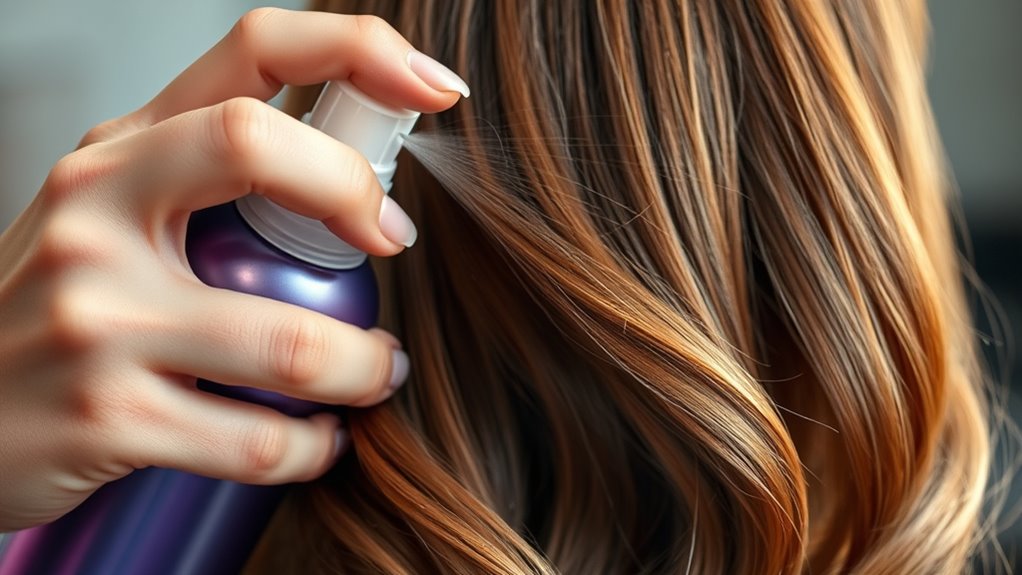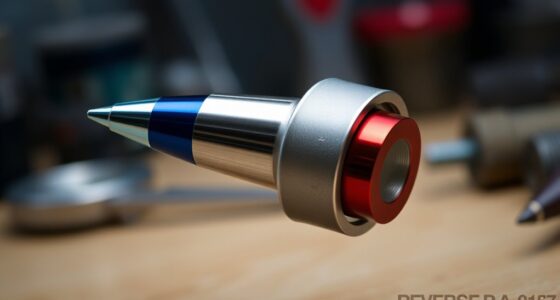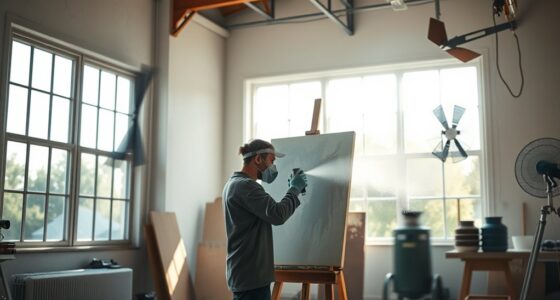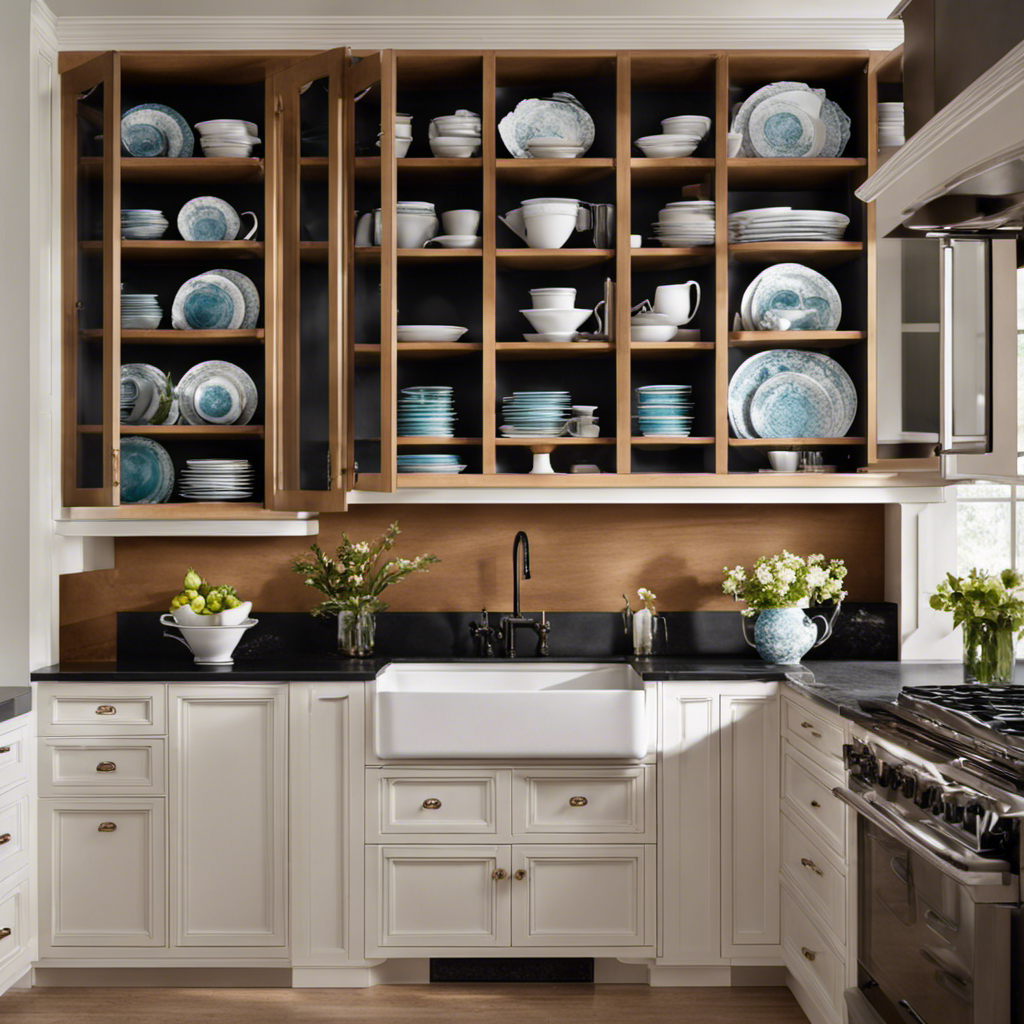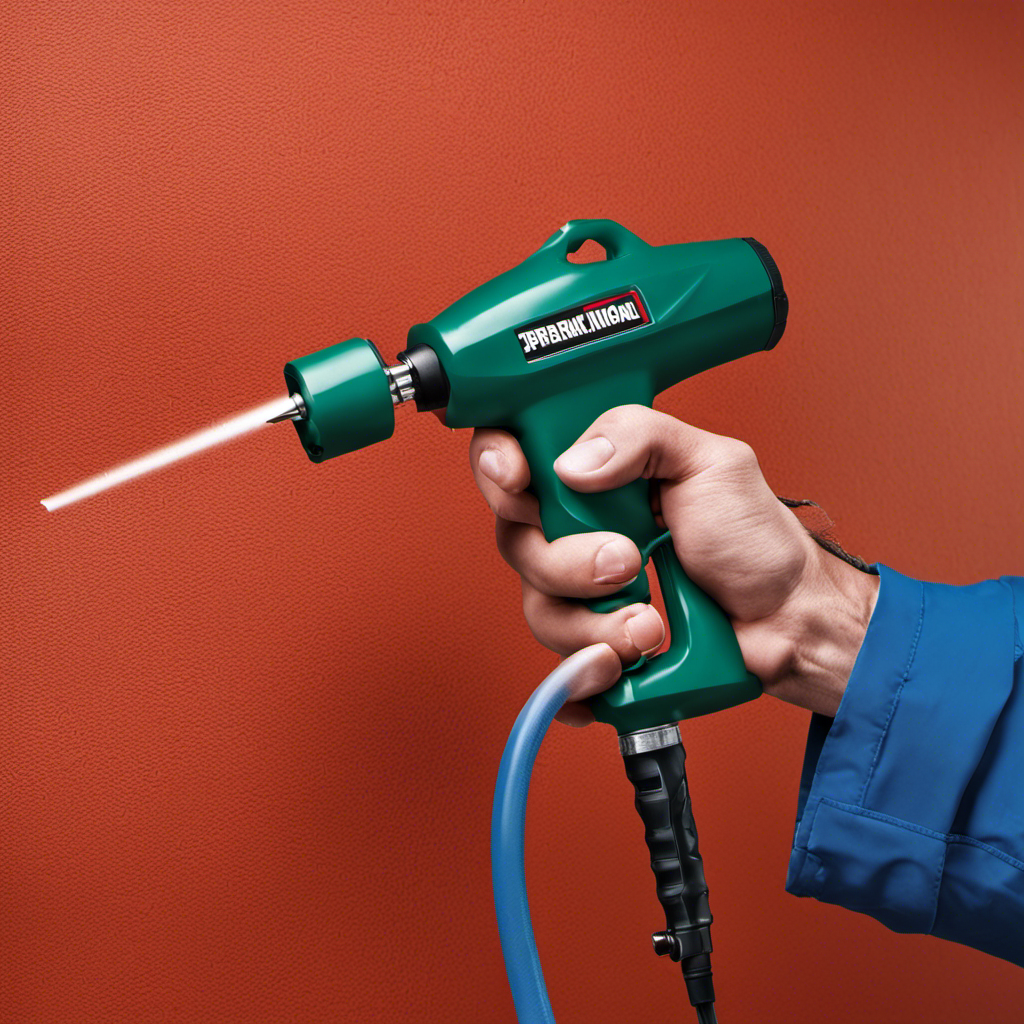Back-rolling or back-brushing after spraying is highly recommended to achieve a smooth, professional finish. These techniques help guarantee even paint coverage, improve adhesion, and fix any surface imperfections or streaks caused by spraying. They also help push paint into textured surfaces for consistent results. If you want a durable, high-quality look, using these methods is key. Keep exploring to discover how to perfect your application and avoid common mistakes.
Key Takeaways
- Use back-rolling or back-brushing to improve paint adhesion and ensure even coverage on textured or uneven surfaces.
- They help correct spray application issues like drips, runs, or missed spots for a seamless finish.
- Back-rolling reduces surface imperfections, streaks, and roller marks, especially on large or complex areas.
- These techniques are essential for blending spray areas and achieving professional, durable results.
- Consider back-rolling or back-brushing when surface imperfections or uneven coverage are visible after spraying.
Understanding the Purpose of Back-Rolling and Back-Brushing
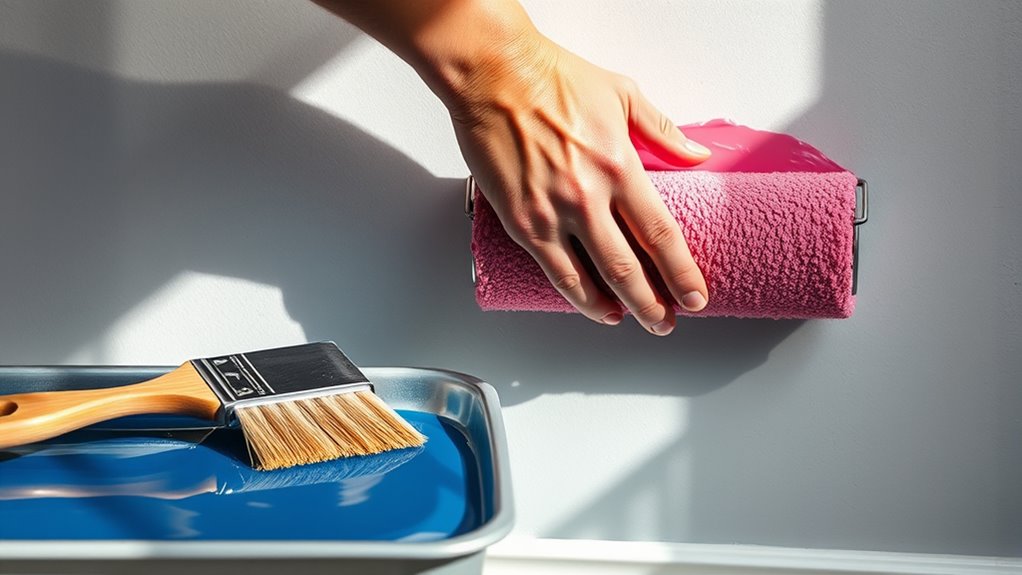
Back-rolling and back-brushing are techniques used to improve the quality and durability of spray coatings. They help boost paint adhesion by pressing the paint into the surface, ensuring a stronger bond. When you back-roll or back-brush, you distribute the coating more evenly, reducing chances of drips or uneven spots. This process also impacts drying time; by working the paint into the surface, you can speed up the drying process and minimize issues like peeling or cracking later. These techniques are particularly useful on textured or porous surfaces, where spray alone might not fully embed the paint. Proper application of these methods can also enhance the paint’s lifespan and overall finish. Additionally, employing proper techniques can help reduce paint waste and improve overall efficiency during application. Moreover, understanding the surface texture helps determine the most effective method for achieving an even coat, especially when working with different material types that may require specific approaches, such as using appropriate primers or surface preparation methods.
When to Consider Back-Rolling or Back-Brushing
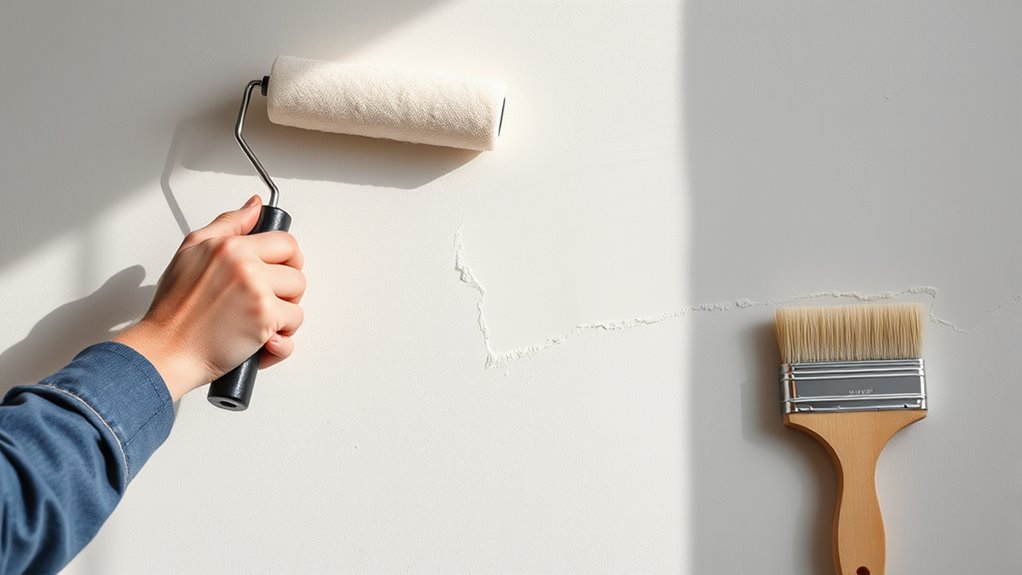
You should consider back-rolling or back-brushing when your coverage isn’t even or when you notice surface imperfections. These techniques help guarantee a smooth, consistent finish across the entire surface. If you see uneven areas, it’s a good time to use back-rolling or back-brushing for better results. Incorporating proper painting techniques can also improve overall finish quality and prevent the need for corrections later. Additionally, understanding surface preparation can be crucial in achieving a flawless coat. For example, using sound healing science principles, such as employing specific techniques to promote a balanced and even application, can contribute to a more uniform finish. Recognizing the importance of technique mastery can further enhance the quality of your work and reduce the necessity for rework. Developing consistent application skills is essential for achieving professional-looking results and minimizing touch-ups.
Achieving Even Coverage
Achieving even coverage is essential for a professional-looking finish, and knowing when to contemplate back-rolling or back-brushing can make all the difference. If you notice uneven color matching or streaks after spraying, it’s time to consider these techniques. Proper paint mixing ensures consistency, but spraying alone may leave areas with thin or overly thick coverage. Back-rolling or back-brushing helps smooth out these inconsistencies, blending edges and creating a uniform surface. Use a roller or brush lightly over the sprayed area, working quickly before the paint dries. This approach is especially helpful on large or textured surfaces where spray application might miss spots or result in uneven layers. Additionally, crochet styles for locs can be used to enhance your overall look while working on these finishing techniques. Proper technique and timing are crucial to avoid overworking the paint, which can cause imperfections or damage to the finish. Being aware of paint application techniques and understanding the importance of surface prep can help you achieve a seamless, professional finish. Also, considering the use of dog names or names inspired by various breeds and cultures can add a fun personal touch to your pet’s identity, but this is more relevant for pet owners than painting projects. Ultimately, these methods help you achieve a seamless, professional finish.
Addressing Surface Imperfections
Surface imperfections such as drips, runs, or roller marks often become apparent after spraying, especially on textured or uneven surfaces. When this happens, back-rolling or back-brushing can help smooth out these flaws. Before doing so, make sure your paint is properly mixed, as inconsistent paint can worsen imperfections. Proper paint mixing is essential to achieve a smooth finish and prevent further issues. Color matching is also crucial if you need to blend repaired areas seamlessly, so always use freshly mixed paint or properly stored leftovers. If you notice uneven sheen or streaks, back-rolling helps even out the surface and restore a uniform finish. This technique is especially useful for textured walls where spraying alone may not achieve a flawless look. Additionally, using the correct application techniques can prevent future surface imperfections and ensure a smooth, professional finish. Proper surface preparation can significantly reduce the need for back-rolling or back-brushing, leading to a more flawless outcome. Being attentive to paint consistency and the quality of your tools can also influence the final result. Addressing surface imperfections promptly ensures your paint job looks professional and cohesive.
The Benefits of Back-Rolling and Back-Brushing
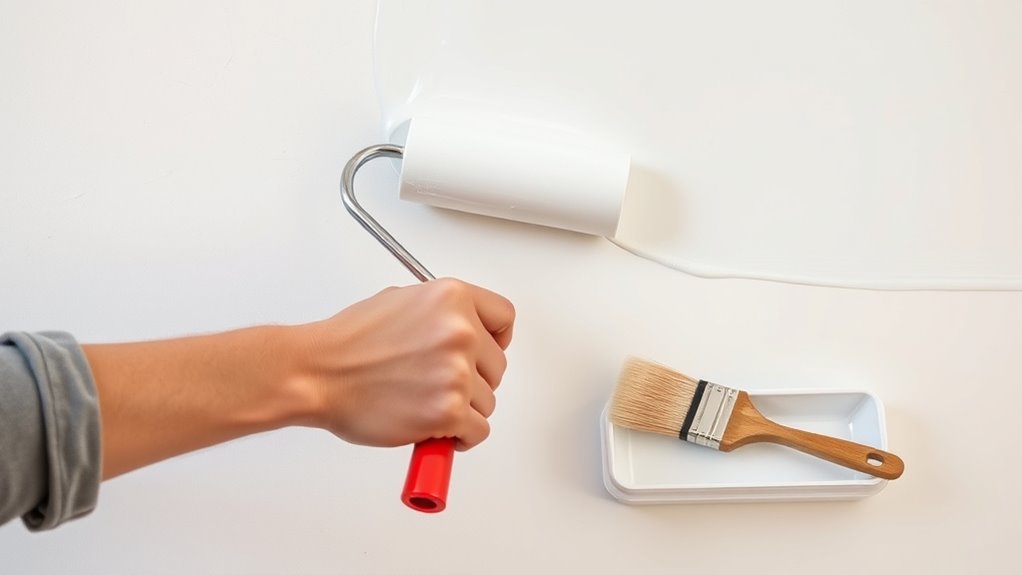
Back-rolling and back-brushing offer several key benefits that can substantially improve the quality of your paint job. They help guarantee even coverage, reducing streaks and missed spots, which is especially important when you’re choosing your paint color. After primer application, these techniques help embed the paint into the surface, enhancing adhesion and durability. Additionally, back-rolling and back-brushing can smooth out roller marks and surface imperfections, resulting in a more professional finish. They also allow you to better control the paint’s thickness, minimizing drips and runs. Proper cleaning and maintenance of your sprayer prevent clogs, and ensure consistent performance, which is essential for achieving optimal results. Using essential oils in cleaning solutions can help prolong the life of your equipment and maintain a fresh scent in your workspace. When preparing your tools, considering retail hours can help you plan your shopping trips efficiently to gather all necessary supplies. Incorporating techniques like back-rolling can also help achieve a high-quality finish, especially when working with paints that require a smooth surface. Embracing these methods is aligned with advancements in automation in business, which focus on improving efficiency and consistency in processes. Overall, integrating these methods gives you a more uniform, long-lasting result, making your effort worthwhile whether you’re working on a small project or a large area.
Types of Surfaces That Benefit From These Techniques
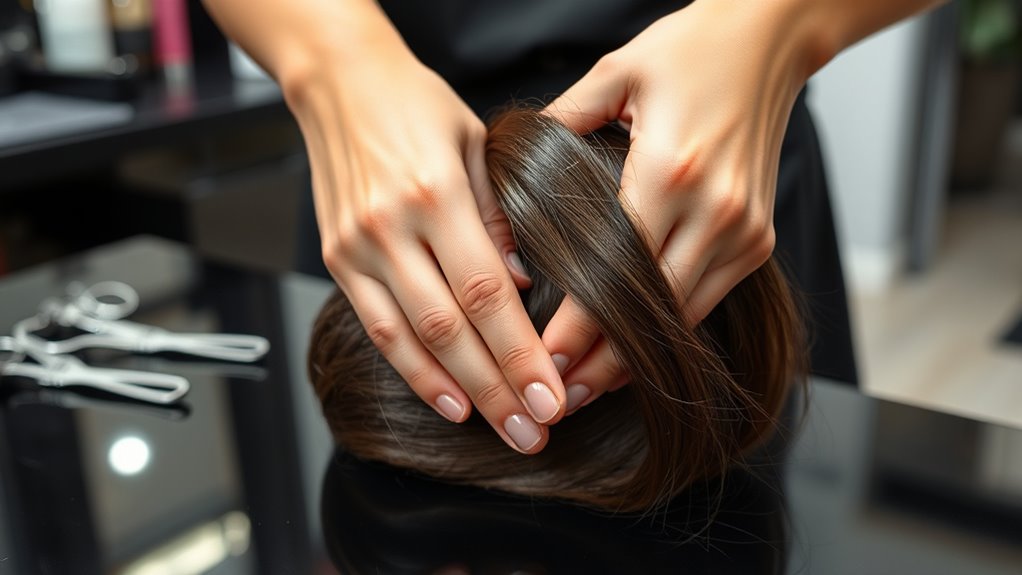
You’ll find that textured wall surfaces often need back-rolling or back-brushing to achieve a smooth, even finish. Stained or uneven areas benefit from these techniques to improve coverage and conceal imperfections. High-gloss finishes also respond well, as they can be smoothed out for a sleek, professional look.
Textured Wall Surfaces
Textured wall surfaces, such as popcorn ceilings, knockdown textures, or orange peel finishes, often require specific techniques to guarantee an even paint application and a smooth final look. Back-rolling or back-brushing helps push paint into the textured patterns, ensuring consistent coverage and vibrant decorative finishes. These techniques are especially beneficial for textured surfaces that tend to trap paint or create uneven patches. To understand how each technique suits different textures, consider this:
| Surface Type | Recommended Technique | Purpose |
|---|---|---|
| Popcorn ceilings | Back-brushing | Even paint penetration |
| Knockdown textures | Back-rolling | Uniform coverage |
| Orange peel | Both methods | Smoother finish |
Choosing the right approach guarantees your textured surfaces look flawless and professionally finished. Proper attention and technique are essential in achieving high-quality results on textured walls, as attention enhances the overall outcome.
Stained or Uneven Areas
Stained or uneven areas on walls and ceilings can be challenging to paint smoothly, often resulting in patchy or inconsistent finishes. To improve color consistency and ensure primer effectiveness, back-rolling or back-brushing is beneficial. These techniques help blend the paint seamlessly over problematic spots. Here are three key reasons to consider them:
- Even Coverage: They smooth out uneven patches, preventing streaks and ensuring uniform color.
- Enhanced Adhesion: They push paint into stains or textured areas, improving primer effectiveness.
- Consistent Finish: They help match the appearance of stained or discolored sections with the rest of the surface.
Using these methods, you’ll achieve a more professional, uniform look, especially on surfaces prone to staining or uneven textures.
High-Gloss Finishes
High-gloss finishes are highly reflective and smooth, making any imperfections or inconsistencies more noticeable. To achieve a flawless look, guarantee proper paint mixing and color matching before spraying. When working with high-gloss surfaces, back-rolling or back-brushing helps smooth out spray patterns and minimizes streaks, enhancing the finish’s clarity. These techniques also help blend paint evenly across the surface, reducing the risk of lap marks or uneven sheen. Because high-gloss paints emphasize surface flaws, taking the extra step to correct issues during application is vital. Proper preparation, including mixing paint thoroughly and matching colors precisely, combined with back-rolling or back-brushing, results in a stunning, mirror-like finish that truly highlights your work.
Choosing the Right Tools for Back-Rolling and Back-Brushing
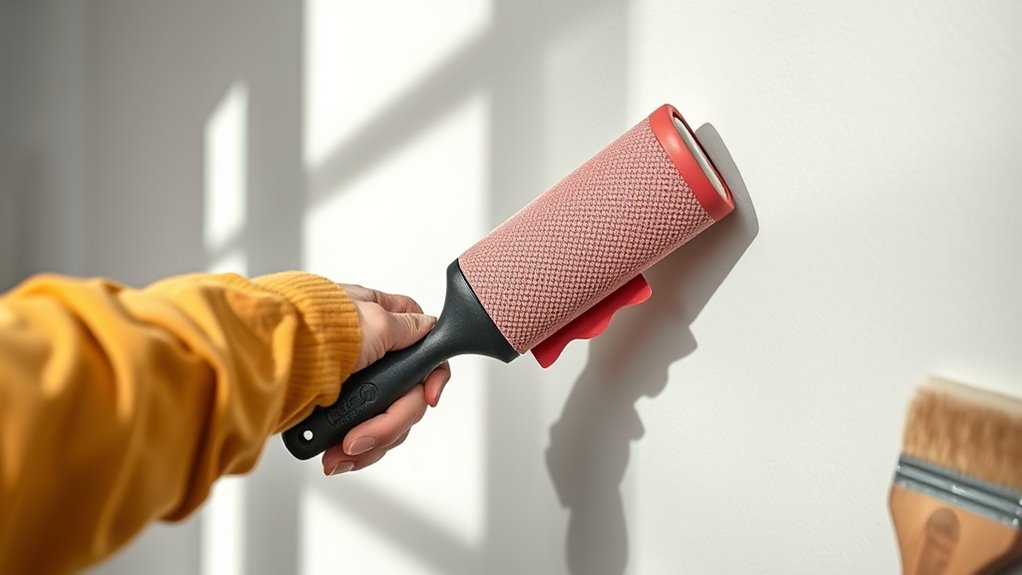
Choosing the right tools for back-rolling and back-brushing is essential to achieving a smooth, even finish after spraying. Your choice of brush selection and roller types directly impacts the final look. To help you get it right, consider these key points:
- Brush Selection: Opt for high-quality, synthetic brushes for better control and even distribution.
- Roller Types: Use nap length appropriate to your wall texture—short nap for smooth surfaces, longer nap for textured walls.
- Tool Quality: Invest in durable tools that won’t shed fibers or leave streaks, ensuring a flawless finish.
Selecting the proper tools helps blend sprayed areas seamlessly and minimizes marks or uneven patches, making your project look professional.
Common Mistakes to Avoid During the Process
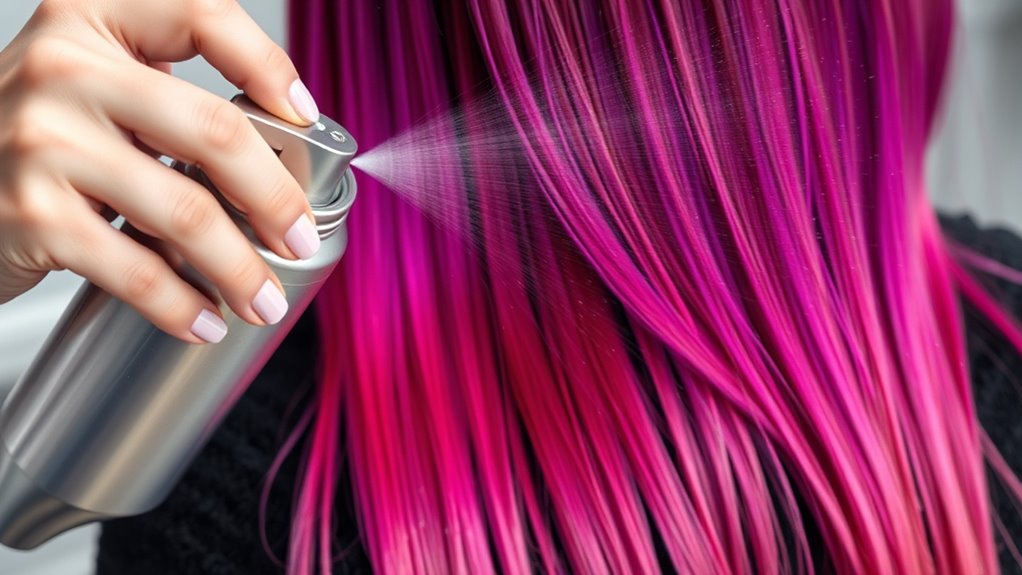
To guarantee a professional finish, it’s essential to be aware of common mistakes that can occur during back-rolling or back-brushing. One mistake is neglecting color matching; if you don’t blend the new coat with existing paint, it can result in uneven spots or streaks. Another mistake is poor equipment maintenance—using dirty rollers or brushes can cause clumping, uneven coverage, and surface imperfections. Rushing the process or applying too much pressure can also lead to streaks or damaged surfaces. Additionally, skipping proper preparation or failing to check your tools regularly can jeopardize the quality of your work. Staying attentive to these details helps ensure a seamless, professional finish and prevents costly rework.
Tips for Achieving a Smooth, Even Finish
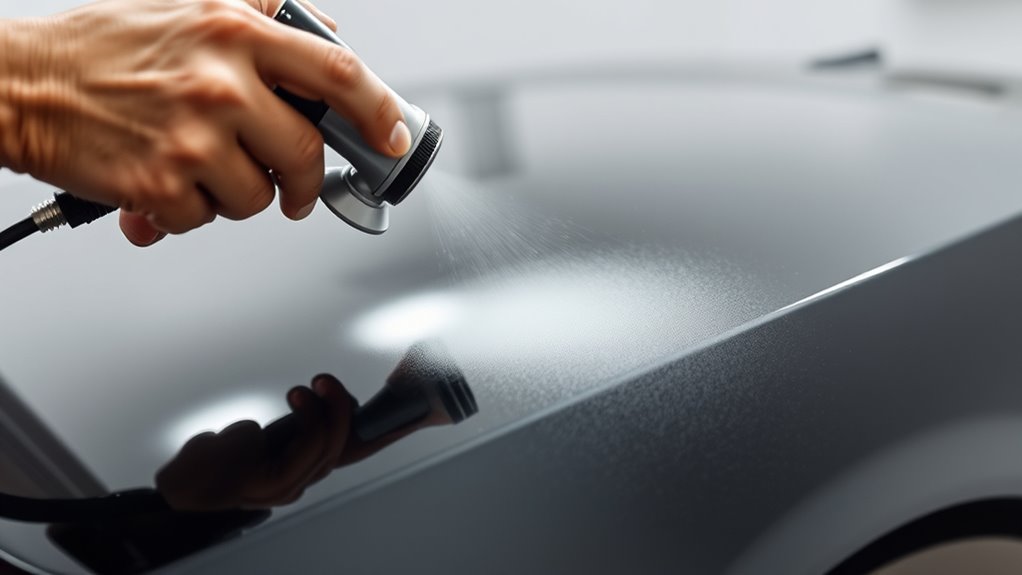
Achieving a smooth, even finish requires careful technique and attention to detail. To guarantee professional results, focus on these key tips:
- Color matching: Always double-check your paint color before application to prevent mismatches and ensure a uniform look across surfaces.
- Paint mixing: Mix your paint thoroughly to achieve consistent color and texture, avoiding streaks or uneven coverage.
- Consistent spraying technique: Maintain a steady distance and overlap strokes evenly to prevent lap marks and achieve a seamless finish.
Frequently Asked Questions
Can Back-Rolling or Back-Brushing Be Skipped Without Affecting Paint Durability?
Skipping back-rolling or back-brushing can impact paint adhesion, especially if surface preparation wasn’t thorough. These steps help guarantee an even coat and better penetration, which is vital for durability. While not always necessary, neglecting them might lead to peeling or uneven wear over time. If your surface is well-prepared and smooth, you might skip these steps, but generally, they’re recommended for maximum long-term results.
How Long Should I Wait Before Applying Back-Rolling or Back-Brushing?
Think of drying time and curing period as the stopwatch for your project. You should wait until the paint is dry to the touch, usually 2-4 hours, before back-rolling or back-brushing. For best results, give it 24 hours to cure fully. Rushing this step can cause uneven texture or damage. Patience guarantees your finish stays smooth and durable—so don’t skip this essential waiting period.
Are There Specific Paint Types That Require Back-Rolling or Back-Brushing?
Certain paint types, especially those with thicker or more textured finishes, benefit from back-rolling or back-brushing. These techniques help improve paint adhesion and make sure a uniform finish consistency. If you’re using high-gloss or specialty paints, you might find that back-rolling or back-brushing helps achieve a smoother, more professional look. Always check the manufacturer’s recommendations for your specific paint to determine if these steps are necessary.
Does Back-Rolling or Back-Brushing Increase Paint Consumption?
Back-rolling or back-brushing can increase paint consumption because you’ll use more paint to achieve good surface coverage and surface adhesion. While it may seem like extra work, it helps verify an even coat and better adhesion, reducing the need for touch-ups later. However, be mindful that this extra step might slightly raise your overall paint costs, but it often results in a longer-lasting, professional finish.
Can These Techniques Be Used on Textured or Specialty Wall Finishes?
Imagine transforming textured surfaces or specialty finishes with ease. You can definitely use back-rolling or back-brushing on these walls to enhance the paint’s adhesion and even out irregularities. These techniques work well, especially on textured surfaces, ensuring a smooth, professional look. Just be mindful of the finish type, and use appropriate tools to avoid damaging delicate specialty coatings. Your walls will look vibrant and perfectly finished.
Conclusion
Whether you’re back-rolling or back-brushing, remember it’s about refining, smoothing, and perfecting your finish. It’s about blending, balancing, and elevating your work to a professional level. When you take the time to back-roll or back-brush, you’re not just applying paint—you’re creating a seamless surface, a flawless canvas, a polished look. Embrace the technique, trust the process, and enjoy the satisfaction of a job beautifully done, every time.
Franz came aboard the Paint Sprayer Zone team with a background in both journalism and home renovation. His articulate writing style, combined with a passion for DIY projects, makes him an invaluable asset. Franz has a knack for breaking down technical jargon into easy-to-understand content, ensuring that even the most novice of readers can grasp the complexities of paint sprayers.
